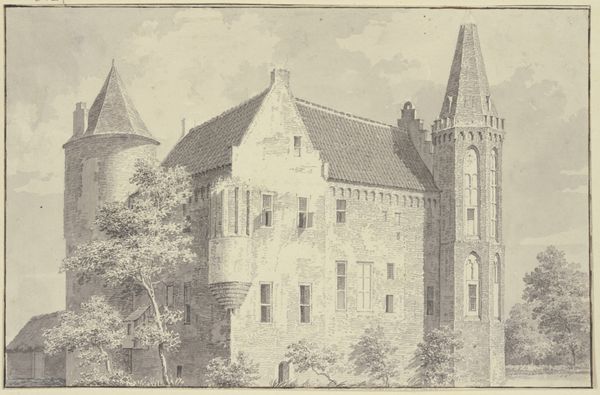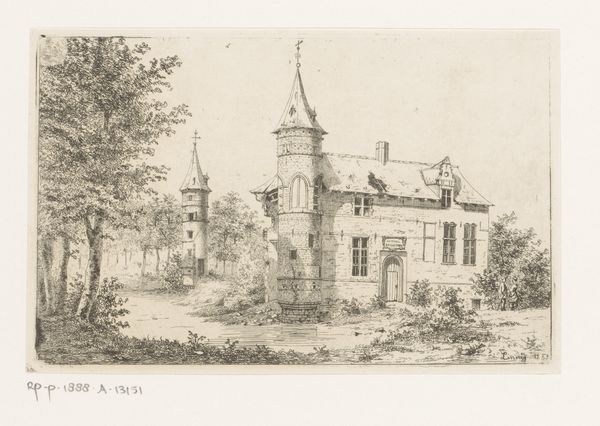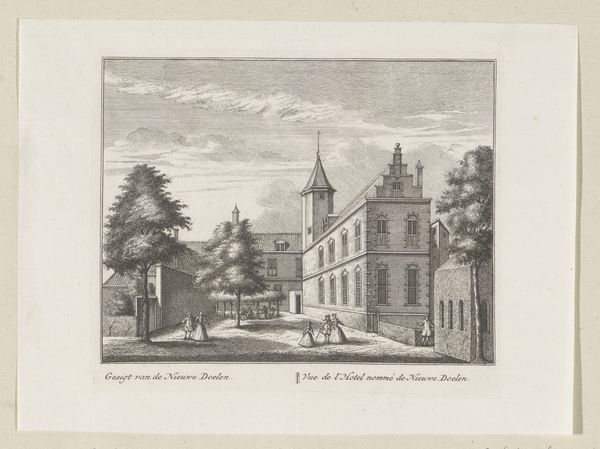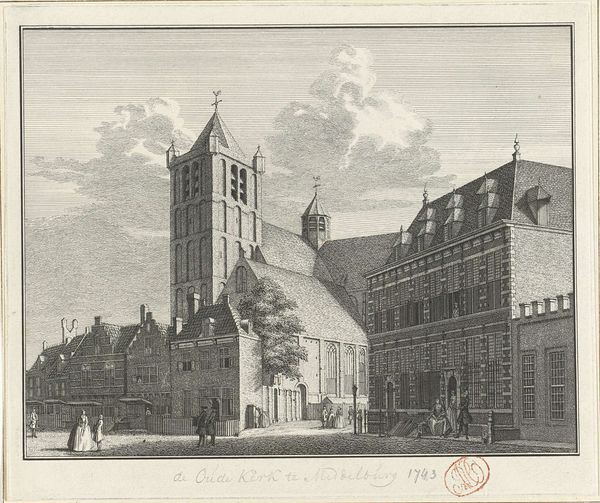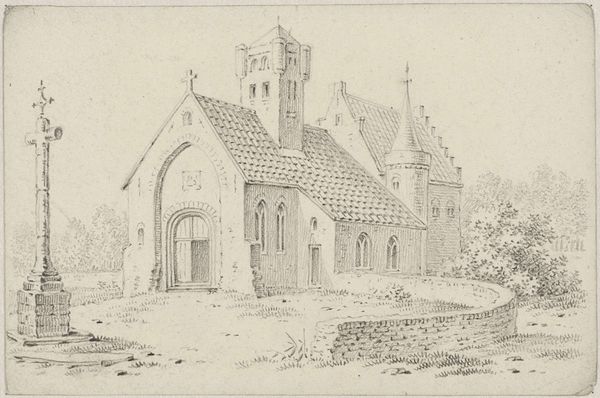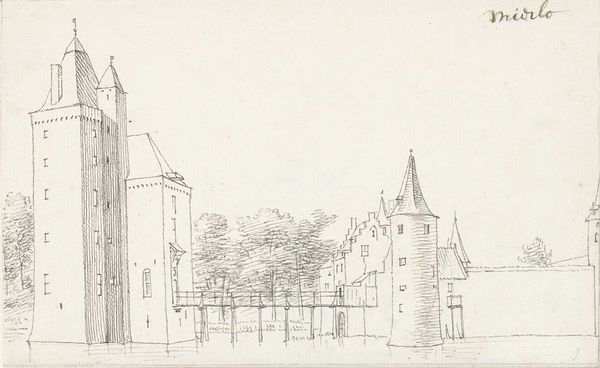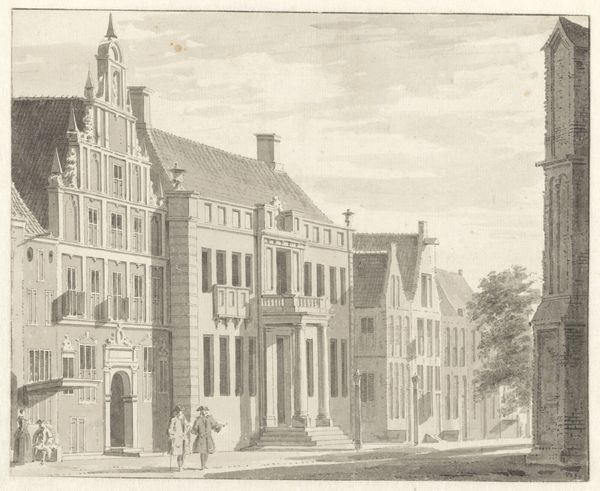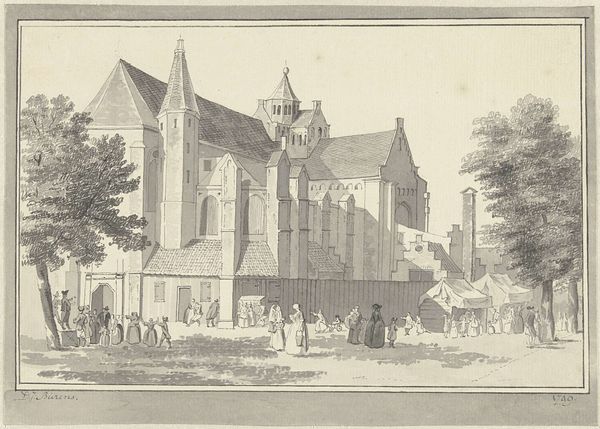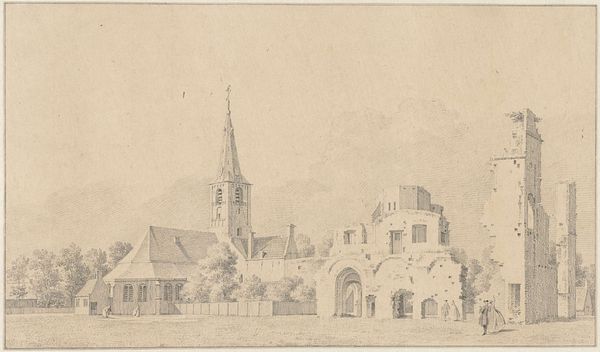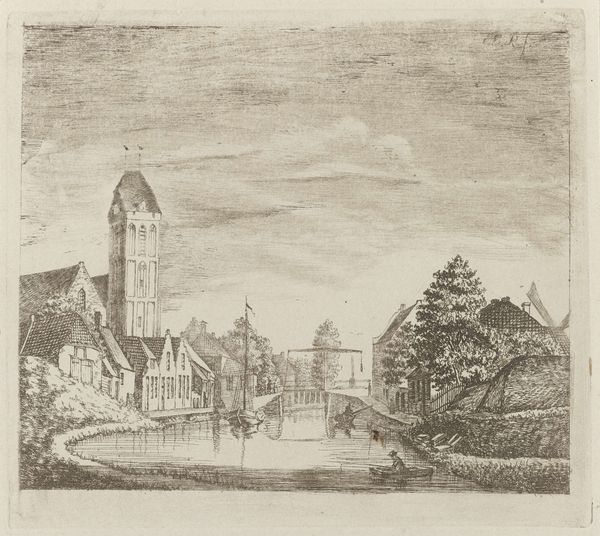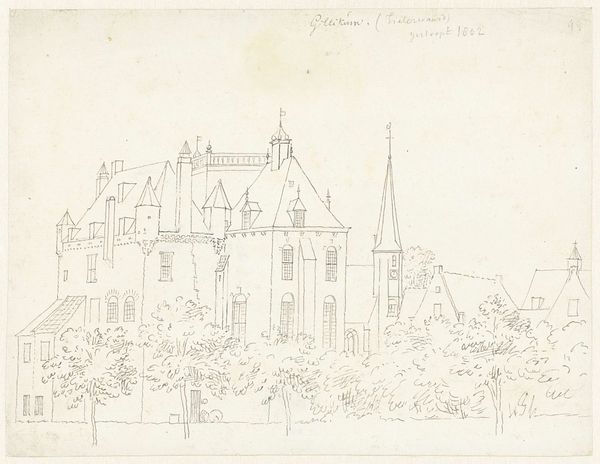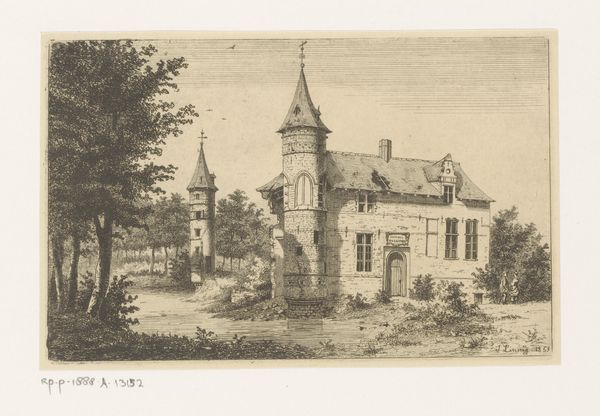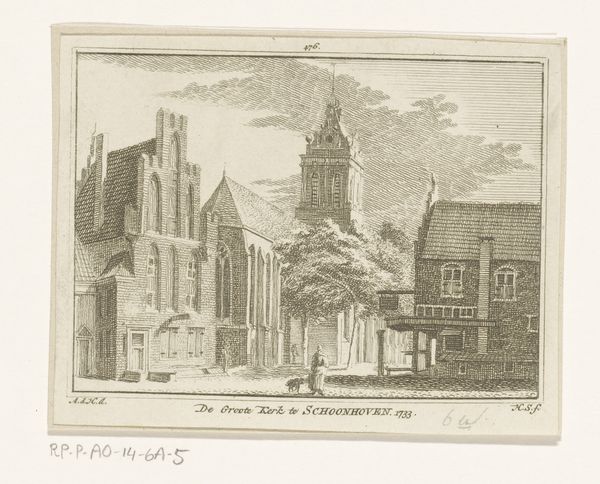
drawing, etching, paper, ink
#
drawing
#
baroque
#
etching
#
landscape
#
etching
#
perspective
#
paper
#
ink
#
cityscape
Dimensions: height 236 mm, width 345 mm
Copyright: Rijks Museum: Open Domain
Curator: It's almost like stepping into a dream, isn't it? This etching by Jan de Beijer, titled "Rijsenburg (Neerlangbroek)", was created in 1751 and renders a very subtle baroque vibe. Editor: Indeed, it feels ethereal. The lines are so delicate, creating this hushed, almost secretive atmosphere around the building. There is some level of ghostly nostalgia in this precise landscape that transcends the building itself. Curator: De Beijer really had a knack for capturing light and atmosphere, even with just ink on paper. Notice the way he uses hatching to suggest shadow and depth, transforming what could have been a simple architectural study into something more evocative. You could say the building almost breathes! Editor: Absolutely, but I see more than just masterful technique here. Consider the historical context: the mid-18th century was a period of shifting power dynamics, with old aristocratic structures being subtly challenged by new economic forces. To me, the landscape embodies privilege and exclusion with its strong emphasis on height and a controlled nature that almost feels exclusionary. What is left outside the frame? Curator: Ah, a crucial observation. As a viewer, I am immediately drawn to its architectural features, to the play of light on stone, the careful depiction of the gardens. It is incredibly serene, although I recognize it might also embody power structures of the past. Is it about how even depictions of beauty can obscure or reinforce existing inequalities? I like to imagine myself walking up that building front. Editor: Exactly. This etching becomes more than just a pretty picture of a wealthy estate. It opens up space to reflect on the societal conditions of the time and how landscape can be used to visually normalize social differences. The attention to detail here reveals an idealized perspective which perhaps wasn't as rosy in reality. Who lived in those out-buildings in the background? What was life like for them in comparison? Curator: That's a perspective I will carry forward, for sure. And maybe art does this—it prompts you to look both closely and critically, all at once. Editor: Precisely. Art offers so many doors through which we might see ourselves as historical and embodied subjects.
Comments
No comments
Be the first to comment and join the conversation on the ultimate creative platform.
